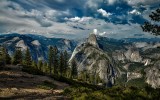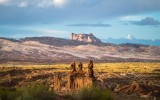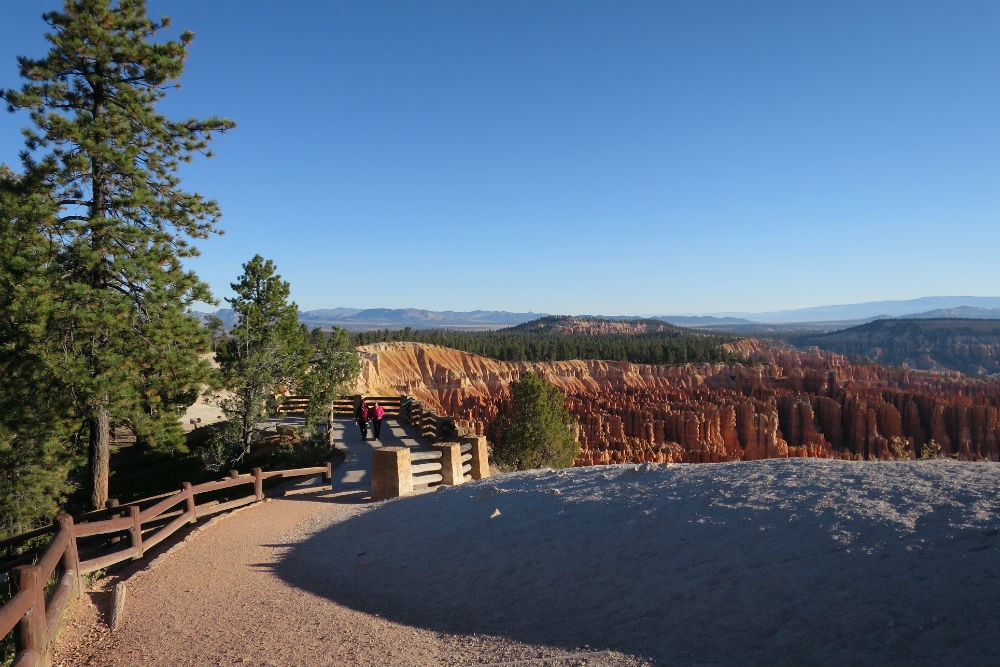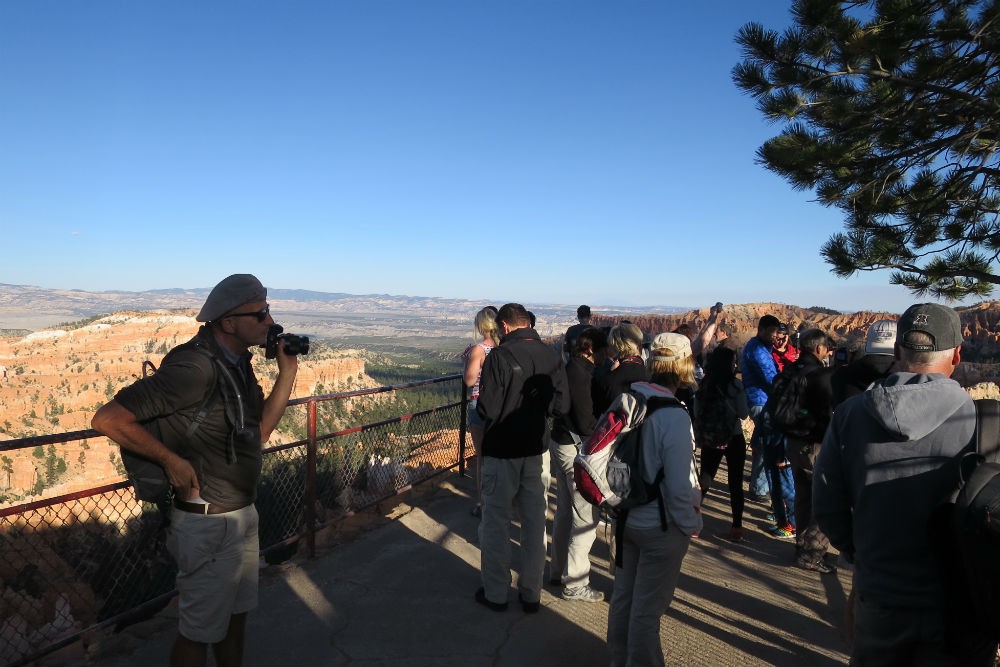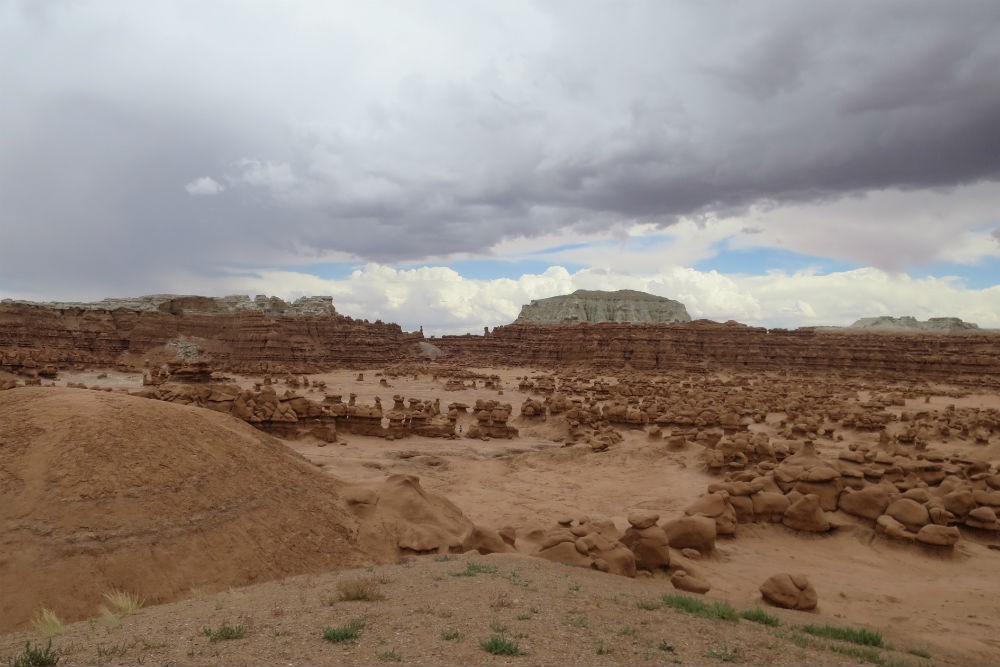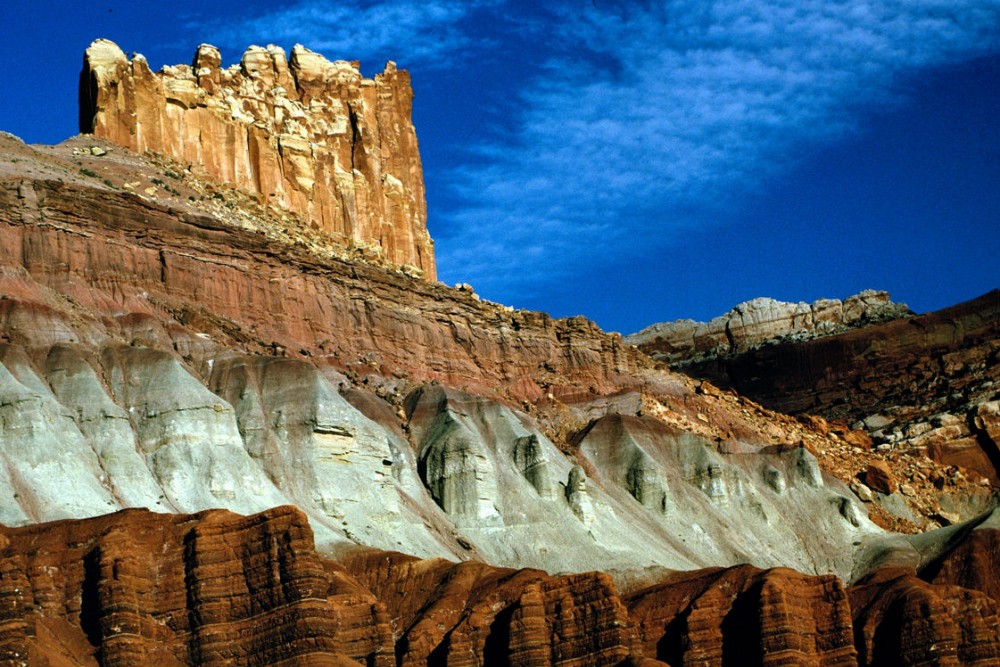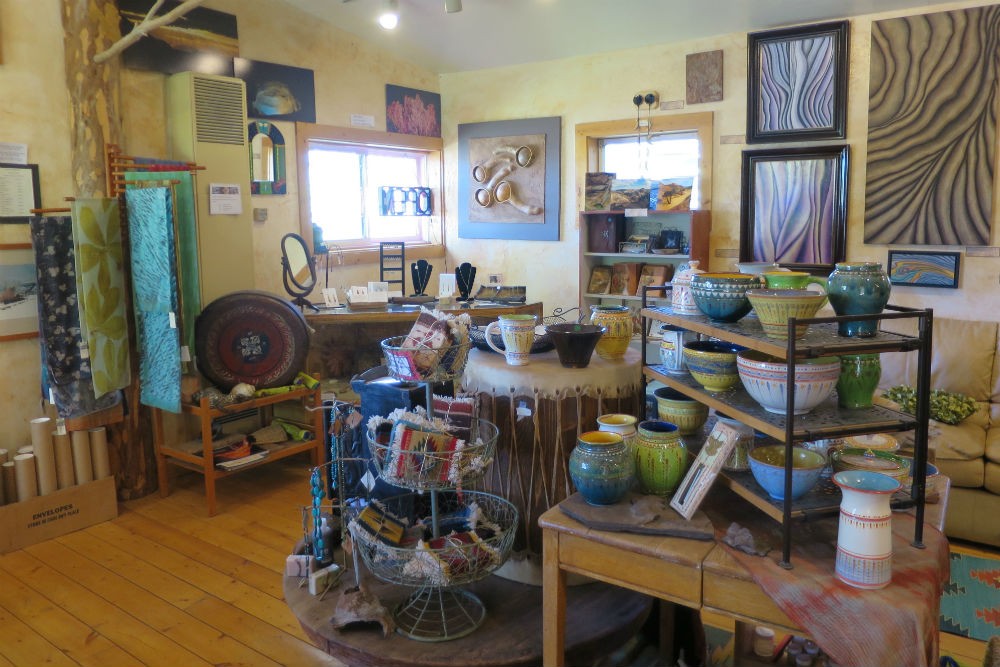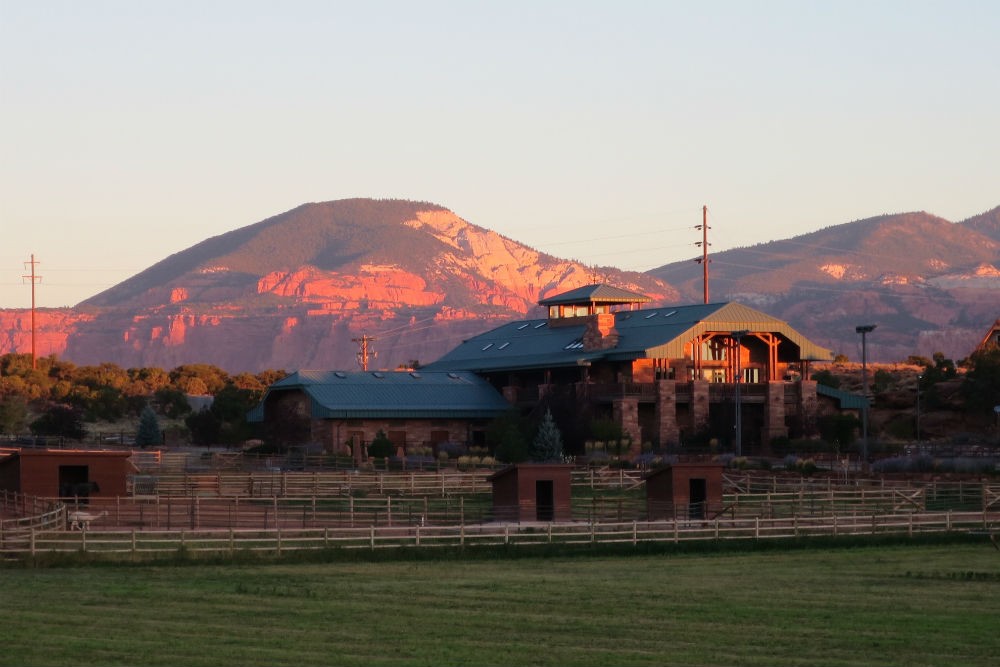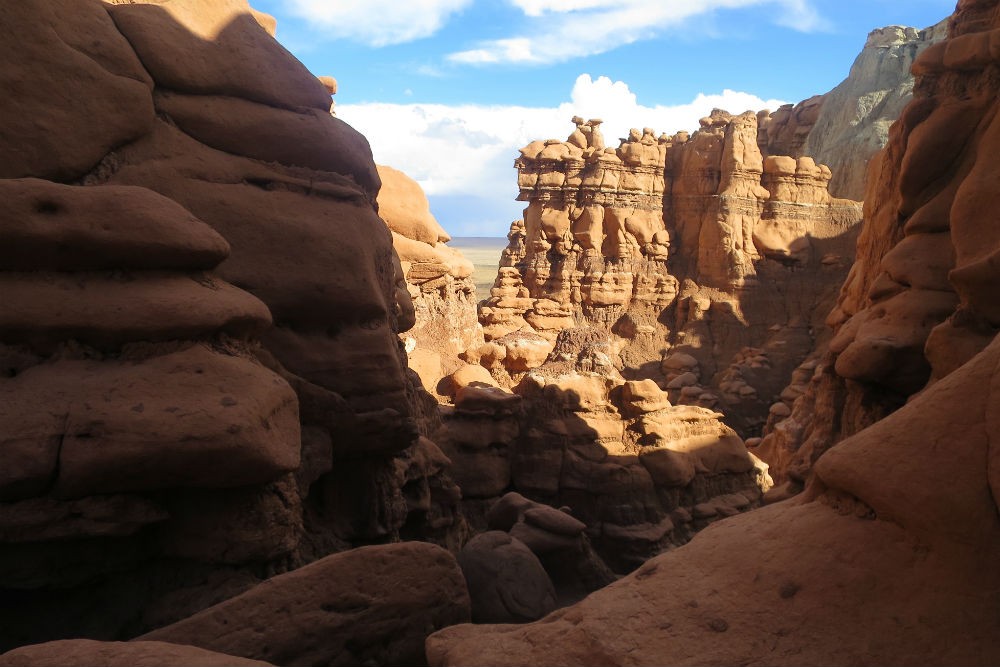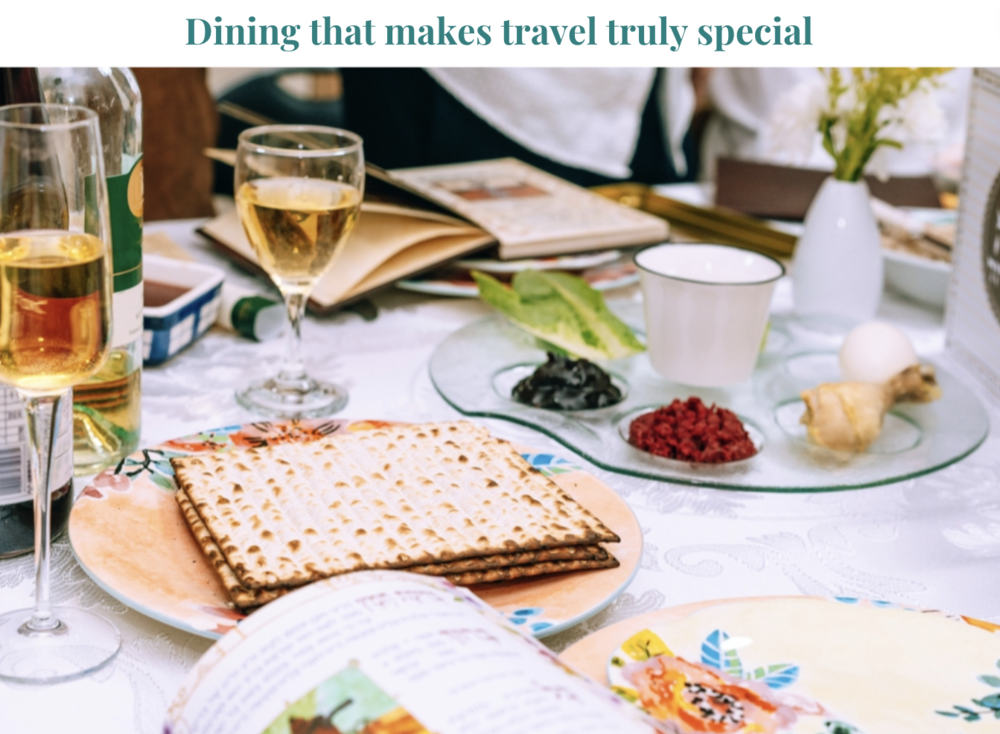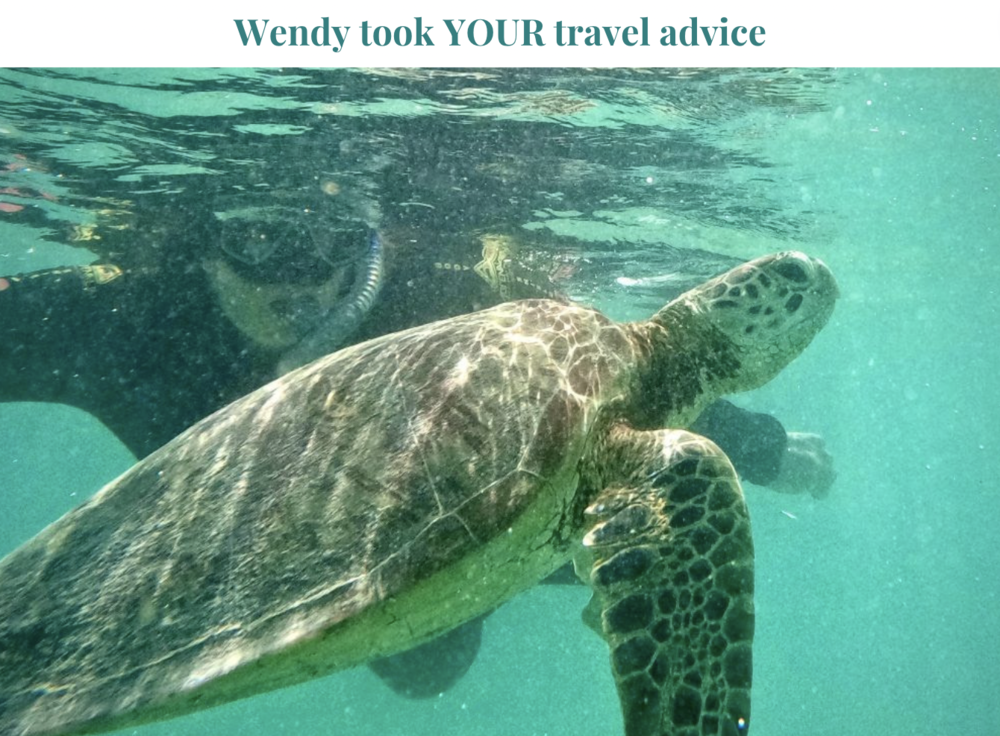The U.S. park system is a national treasure that many parents want to share with their kids. But when you’re beholden to the school calendar, you’re forced to visit these parks at their busiest times of year: summer, spring break, Memorial Day, Labor Day, and other school holidays. Thus there are crowds. But there are also strategies for avoiding them. I’ve tested out many of these tricks at numerous national parks over the years, most recently when I took my son to Yosemite for spring break. Here’s what I’ve found works best:
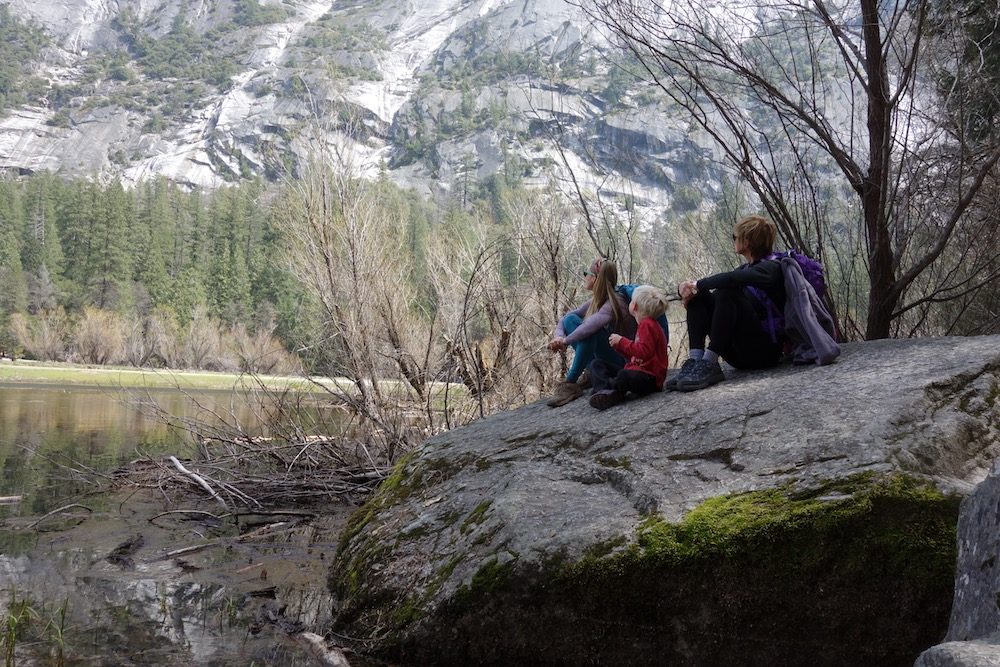
A quiet moment of reflection on busy Mirror Lake. Photo: Ryan Damm
Use the right park entrance.
Many parks have entrances that are less busy than others. In Yosemite, for instance, far fewer people approach from the east (a route that is open only in summer) than from the west. Be strategic about which entrance you use.
Choose inside-the-park accommodations.
The entry gates are often the worst choke points in a national park; we spent an hour in the car inching our way toward Yosemite’s Arch Rock entrance on a Sunday afternoon in April. You’ll pay a premium for accommodations inside any national park—and you’ll have to plan far in advance, as many hotels and campsites book up as soon as space becomes available—but you’ll save a ton of time by only having to enter the park once.

Zeke focuses at a mosaic workshop put on by the Yosemite Conservancy. Photo: Ryan Damm
Hit the iconic sights well before 9 am.
Time after time, I’ve found that even the most popular spots are nearly empty if you arrive before 9am—and ideally earlier. I know it’s difficult to get kids out the door at the crack of dawn, but prep as much as you can the night before, and consider offering an incentive if everyone’s ready on time (an afternoon ice cream?). If there are iconic sights on your hit list—Bridalveil Falls in Yosemite, Old Faithful in Yellowstone, Inspiration Point in Bryce Canyon—make a beeline to those first. By the time the crowds have descended later in the morning, you’ll be off exploring less trodden trails.
Explore in the evenings too.
Evening is less crowded than midday and can be transcendent. I once took a stroll into Bryce Canyon’s amphitheater by the light of the full moon, and it was magical. Moreover, I saw only two other people on what’s usually a busy trail in daytime.
Avoid mealtime mobs by having picnics far from commercial areas.
After the entrance gate, the largest crowd we dealt with in Yosemite was at the Village Store, a grocery and souvenir shop in Yosemite Village. I’m glad my son has a memento to remember the trip—and he loved the mosaic-making workshop that he took at the Yosemite Art Center next door. But I’m even happier that we were able to avoid Yosemite Village’s mealtime crowds by packing a picnic each day—something we were able to do because we’d booked a vacation home rental in Yosemite West, a community that is technically outside Yosemite but on the park side of the fee gates.
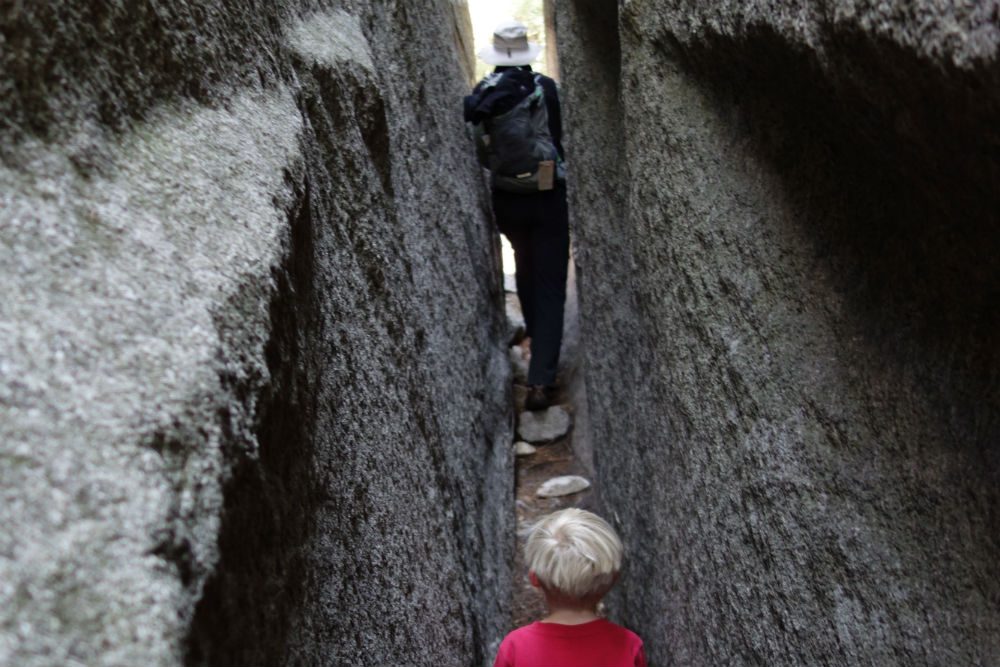
The guide dangled the promise of “a rock we can walk through” to push my five-year-old along the trail. Here, we make the tight squeeze. Photo: Ryan Damm
Hire a naturalist guide to get you truly off the beaten path.
Our guide took us on quieter trails that were alternatives to the ones we would have chosen on our own, and he made suggestions for how to spend the rest of our time in the park. He also opened my son’s eyes to this new place in a way I couldn’t have, explaining everything from the strange phenomenon of frazil ice to the culinary techniques of the Ahwahneechee people who once populated the region. If you’re seeking a superlative national-parks itinerary and travel arrangements, complete with the most knowledgeable and engaging guides, we know who to recommend: Just write to Ask Wendy.
Choose dirt over pavement.
Many park visitors barely leave their vehicles, doing so only long enough to snap a photo and move on to the next marquee sight. When the roads are jammed, find a place—any place—to leave your car and hit the trails. No matter where you are, the farther you walk, the fewer people you’ll see. And it’s a national park, after all, so it’s virtually guaranteed to be scenic.
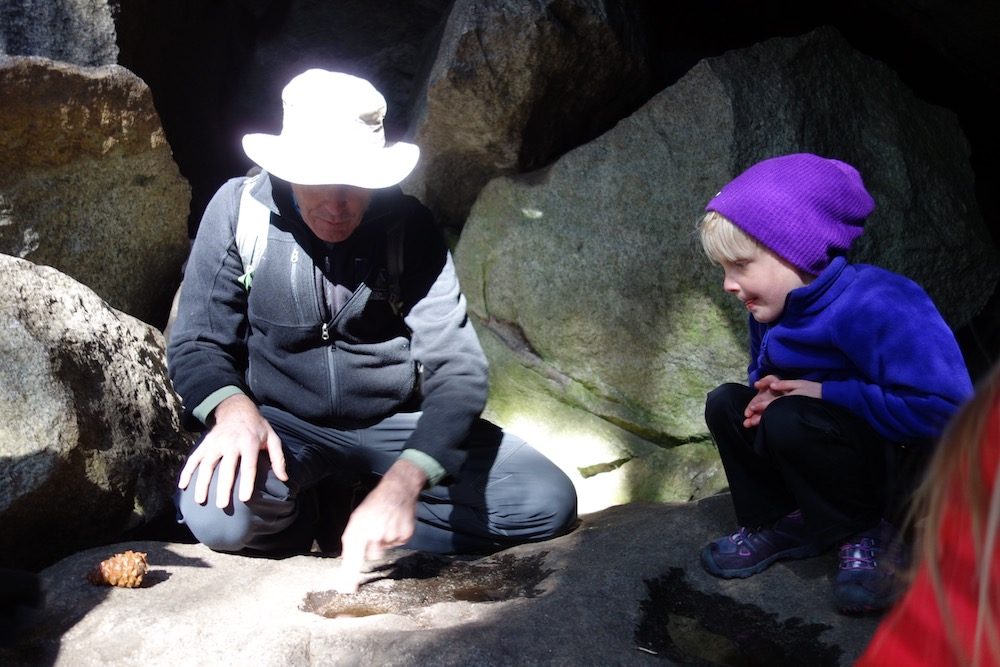
Our Yosemite guide shows Zeke the bedrock mortars made by Native Americans to prepare acorns and other foods perhaps 1,000 years ago. Photo: Ryan Damm
Interview park rangers.
When there are multiple ways to get to a popular spot, ask a park ranger which option is the least crowded. For instance, there are several different routes to Mirror Lake in Yosemite Valley. Our guide took us on a trail where we passed only a few other hikers, plus two school groups gathered in a glade; by contrast, the paved path that we returned on felt like a double-wide city sidewalk on a busy afternoon.
Be a smarter traveler: Use Wendy’s WOW List to plan your next trip. You can also follow her on Facebook, Twitter @wendyperrin, and Instagram @wendyperrin, and sign up for her weekly newsletter to stay in the know.

